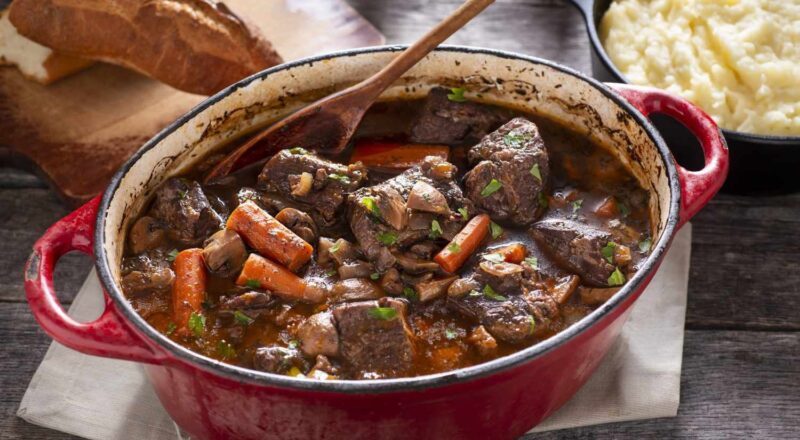When it comes to baking sourdough bread, the question of what size of Dutch oven for sourdough bread is a common one. The right size not only affects the shape and texture of your loaf but also plays a significant role in ensuring it bakes evenly. In this guide, we will walk you through the essential considerations to make an informed decision, supported by expert advice.

Understanding the Basics: What is a Dutch Oven?
A Dutch oven is a thick-walled cooking pot with a tight-fitting lid. Traditionally made from cast iron, they are also available in cast aluminium or ceramic. Dutch ovens are known for their heat retention and even cooking characteristics. They are versatile and can be used for a variety of cooking methods like braising, stewing, frying, and baking.
Why Use a Dutch Oven for Sourdough Bread?
For baking sourdough bread, a Dutch oven replicates the steam-injection ovens used by professional bakers. The tight-fitting lid traps steam released from the dough, which helps in achieving a beautiful, crusty exterior and a moist interior. To make the best sourdough bread, choosing the correct size of the Dutch oven is crucial.
:max_bytes(150000):strip_icc()/Which-Dutch-Oven-Size-Is-Right-for-You-FW-tout-72667962e9d849258bce69ba1e82a7b9.jpg)
Recommended Sizes for Baking Sourdough Bread
The size of your Dutch oven will depend on the loaf you plan to bake and its weight once the dough has risen. Most experts agree that the ideal size ranges from 4-6 quarts.
4-Quart Dutch Ovens
A 4-quart Dutch oven is suitable for smaller loaves, roughly 1 to 1.5 pounds of dough. This size ensures the dough has enough room to expand without spreading too thin, creating a well-shaped loaf.
Common Size Dutch Ovens
5-Quart Dutch Ovens
If you’re baking medium-sized loaves, around 2 pounds, a 5-quart Dutch oven provides the perfect balance. Its spacious enough to accommodate the loaf as it rises while maintaining a desirable shape.
Dutch Oven Chili
6-Quart Dutch Ovens and Larger
Larger loaves that exceed 2 pounds or if youre planning to bake more than one loaf at a time, a 6-quart Dutch oven is your go-to. It provides ample space for the dough to expand and results in a consistent bake.
Season Staub Dutch Oven

Shape Matters: Round vs. Oval Dutch Ovens
The shape of your Dutch oven can impact the aesthetic and texture of your bread. While round Dutch ovens are more common and are typically recommended for sourdough bread, oval ones can also be used for longer, ciabatta-style loaves.
Round Dutch Ovens
Round Dutch ovens are preferred due to their symmetry, which helps the dough expand uniformly producing an even crust.
Oval Dutch Ovens
Oval Dutch ovens can be used for longer loaves. However, the heat distribution may vary slightly, affecting the final result of your bread. They are more versatile for other cooking tasks but might compromise a bit on the quality of sourdough bread.
Material Considerations: Cast Iron vs. Ceramic Dutch Ovens
The material of your Dutch oven also plays a significant role. Lets look at the common options:
Cast Iron Dutch Ovens
Cast iron Dutch ovens are durable and offer excellent heat retention and even cooking. They are ideal for baking sourdough bread as they maintain a consistent temperature and create the necessary steam environment.
Ceramic Dutch Ovens
Ceramic Dutch ovens are lighter and easier to handle but may not retain heat as effectively as cast iron. They still offer good results for sourdough bread but be cautious about sudden temperature changes, as ceramic can crack.
Additional Tips for Baking Sourdough Bread in a Dutch Oven
Baking sourdough bread is an art that requires practice and patience; here are a few additional tips:
Preheat Your Dutch Oven
Always preheat your Dutch oven to the required baking temperature before placing your dough inside. This step ensures an immediate burst of steam when the dough is placed inside.
Best cleaning method Dutch Ovens
Use Parchment Paper
Using parchment paper makes it easier to transfer the dough to the Dutch oven. It also prevents sticking and makes the cleanup process a breeze.
Score Your Bread
Scoring your bread allows the steam to escape and controls how the bread expands during baking. Use a sharp knife or a bread lame to make shallow cuts on the surface of the dough.
FAQ: Common Questions about Dutch Ovens and Sourdough Bread
Do I need to season my Dutch oven?
If you are using a cast iron Dutch oven, it’s recommended to season it occasionally, especially after cleaning. This helps maintain its non-stick surface.
Dutch Oven Sticking
Can I bake other types of bread in a Dutch oven?
Absolutely! A Dutch oven is versatile and can be used to bake various types of bread, including whole wheat, rye, and even sweet bread varieties.
What should I do if my bread sticks to the Dutch oven?
To prevent sticking, ensure you preheat the Dutch oven, use parchment paper, and properly season your cast iron Dutch oven if necessary.
As an Amazon Associate, I earn from qualifying purchases.

